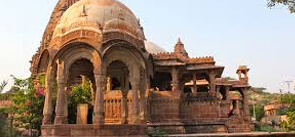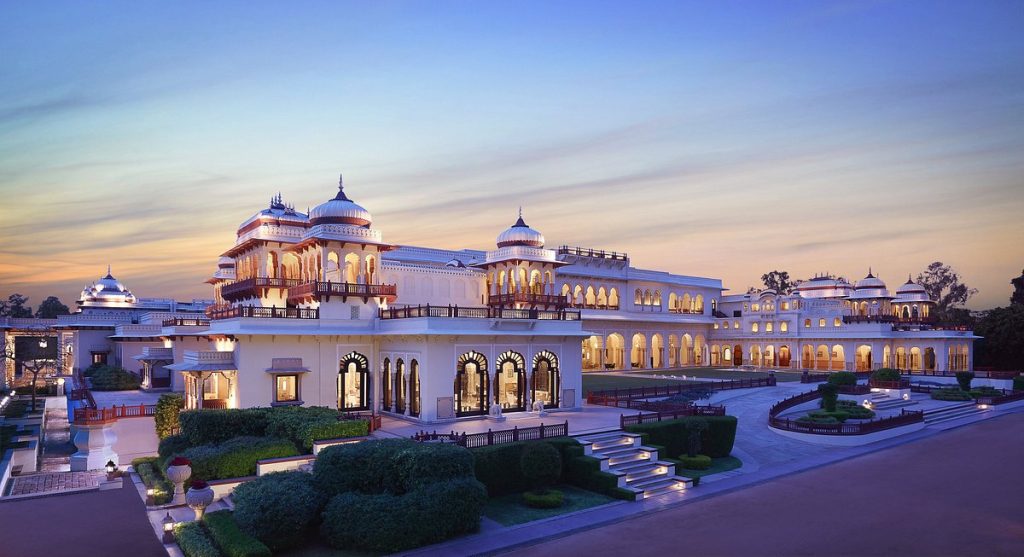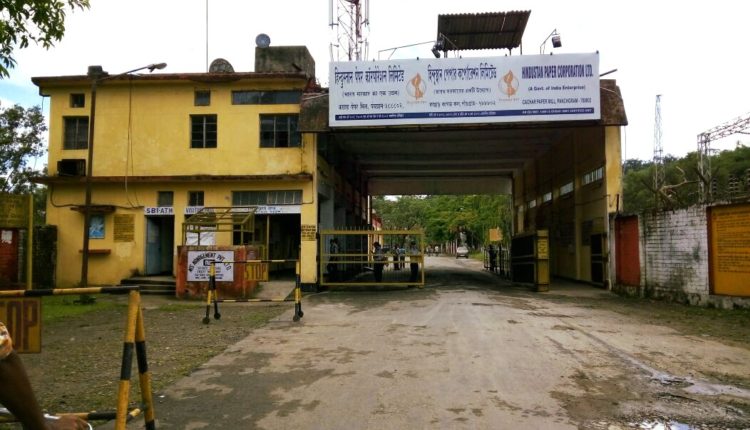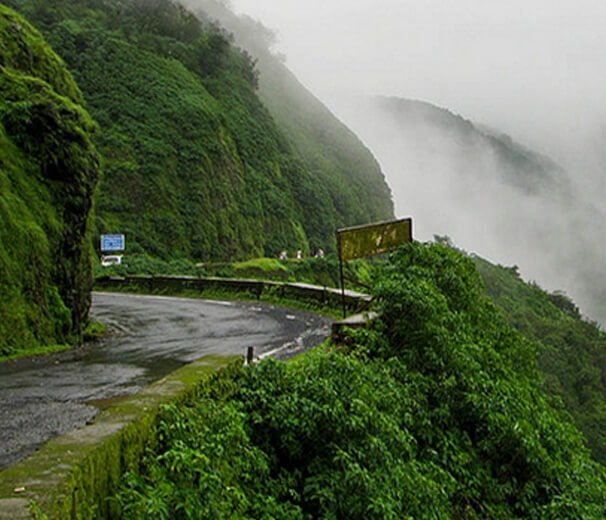Explore the rich tapestry of history and culture in Assam and Nagaland. These northeastern states offer unique experiences and vibrant traditions.
Assam and Nagaland, nestled in India’s northeastern region, are treasures of history and culture. Assam, known for its tea gardens and silk, boasts ancient temples and wildlife sanctuaries. Nagaland, with its diverse tribes, showcases colorful festivals and indigenous crafts. A tour through these states is not just a journey; it’s an immersion into centuries-old traditions and lifestyles.
From the majestic Brahmaputra River in Assam to the Naga hills, every corner tells a story. Join us as we delve into the fascinating history and culture of Assam and Nagaland, uncovering the essence of these enchanting lands.
Introduction To Assam And Nagaland
Are you ready to embark on an unforgettable journey through the rich tapestry of Indian culture? Welcome to the History Cultural Tour of Assam and Nagaland! These two northeastern states are treasure troves of diverse traditions, stunning landscapes, and historical landmarks. Whether you’re a history buff, a nature lover, or someone eager to dive into unique cultural experiences, Assam and Nagaland have something special for you.
Geographical Overview
Assam and Nagaland lie in the northeastern corner of India, bordered by Bhutan, Bangladesh, and Myanmar. Assam is known for its lush tea gardens, the mighty Brahmaputra River, and verdant landscapes that stretch as far as the eye can see. On the other hand, Nagaland is renowned for its picturesque hills, dense forests, and vibrant tribal cultures.
Imagine waking up to the serene view of tea plantations in Assam, followed by a day exploring the rolling hills of Nagaland. The geographical diversity here is truly mesmerizing. You can enjoy everything from river cruises to mountain treks, making your trip a memorable adventure.
Historical Significance
Assam and Nagaland are steeped in history, offering a rich narrative that dates back centuries. Assam, for instance, is home to the ancient Ahom Kingdom, which ruled the region for over six hundred years. The majestic temples, forts, and palaces in Assam provide a glimpse into its glorious past.
In Nagaland, the history is preserved through its vibrant tribal cultures. The state is home to sixteen major tribes, each with its unique customs, festivals, and heritage. The Hornbill Festival, held annually, is a remarkable showcase of Naga culture, featuring traditional dances, music, and crafts.
As you walk through these historical landmarks, you can’t help but feel a connection to the past. The stories of bravery, resilience, and cultural evolution come alive, making you ponder the depth and complexity of human history.
So, what are you waiting for? Dive into the rich historical and cultural tapestry of Assam and Nagaland. Feel the pulse of history as you explore ancient temples and tribal festivals. How will these experiences reshape your understanding of Indian heritage? Only one way to find out!
Early History And Settlements
Exploring the early history and settlements of Assam and Nagaland is like turning the pages of a captivating ancient manuscript. The rich tapestry of cultures, tribes, and civilizations that have flourished in these regions tells us tales of resilience, innovation, and community. If you’re a history buff or simply curious about the roots of these vibrant states, then this journey through time will be both enlightening and fascinating.
Ancient Tribes
The ancient tribes of Assam and Nagaland are the soul of their cultural heritage. In Assam, the Ahoms, who migrated from Myanmar in the 13th century, played a significant role in shaping the region’s history. They introduced unique cultural practices and built the formidable Ahom kingdom, which resisted Mughal invasions for centuries.
Nagaland, on the other hand, is home to several indigenous tribes such as the Angami, Ao, and Sumi. Each tribe has its own distinct traditions, languages, and festivals. I recall visiting a Naga village where I was greeted with traditional folk songs and dances. The experience was surreal—it felt like stepping into a living museum where history was not just preserved but celebrated.
Archaeological Discoveries
The archaeological discoveries in Assam and Nagaland offer a window into their ancient past. In Assam, the excavations at the ancient site of Madan Kamdev revealed temple ruins dating back to the 9th and 10th centuries. These intricate carvings and sculptures provide insights into the religious and artistic endeavors of that era.
In Nagaland, the discovery of ancient megaliths and burial sites in places like Chungliyimti further enriches our understanding of early Naga civilizations. These findings indicate advanced societal structures and elaborate rituals surrounding death and afterlife.
Have you ever wondered what stories these ancient relics hold? Visiting these archaeological sites, you can almost feel the whisper of the past, urging you to delve deeper into the mysteries of these ancient lands.
As you traverse through the early history and settlements of Assam and Nagaland, you will find that each stone and each story adds a new layer to your understanding of these incredible states. So, why not embark on this historical journey and uncover the secrets that have shaped the cultural fabric of Assam and Nagaland?
Colonial Era Impact
Discover the rich colonial history of Assam and Nagaland. Explore ancient buildings, local traditions, and cultural heritage. This tour offers a glimpse into the past influences that shaped the region.
The Colonial Era Impact on Assam and Nagaland offers a fascinating glimpse into how British rule shaped the socio-political and cultural landscape of these regions. Understanding this historical period allows you to appreciate the complexity and resilience of the local cultures. Let’s delve into the specifics of this impact.British Influence
The British influence on Assam and Nagaland is profound and multifaceted. When you visit these regions, you can still see the remnants of British architecture, such as tea estates in Assam. The British introduced tea cultivation in the 19th century, transforming Assam into one of the world’s largest tea producers. Imagine walking through lush tea gardens and knowing that these landscapes were meticulously planned by colonial administrators. It’s a blend of natural beauty and historical significance. The British also established educational institutions and introduced Western-style education. This was a double-edged sword. On one hand, it modernized the region; on the other, it undermined traditional education systems. You’ll find many locals who view this with mixed feelings.Changes In Governance
The changes in governance brought by the British were equally significant. Before British rule, Assam and Nagaland had their own systems of governance. These were often community-based and decentralized. The British centralized governance, implementing administrative divisions and land revenue systems. Think about how this shift would feel. The new governance model was alien and imposed from above, creating a disconnect between the rulers and the ruled. It also introduced a legal system that was foreign to the local customs. Yet, this period also saw the emergence of local leaders who adapted to the new system while advocating for their people’s rights. This duality is fascinating to explore. It shows resilience and adaptability in the face of external pressures. As you walk through the streets of Assam’s towns or the villages of Nagaland, consider this colonial legacy. How did it shape the identities of these communities? How does it influence their present-day interactions with governance and education? Your visit to these regions will be enriched by this historical context. You’ll not only see beautiful landscapes and vibrant cultures but also understand the layers of history that have shaped them.Cultural Diversity And Traditions
Assam and Nagaland boast rich cultural diversity and deep-rooted traditions. These states in India’s northeast offer a unique blend of ethnic groups, each with distinct customs, languages, and art forms. Visiting these regions is like stepping into a living museum where ancient traditions thrive.
Ethnic Groups
Assam is home to various ethnic groups such as Assamese, Bodos, and Mishings. Each group has its own culture, attire, and language. The Assamese people are known for their hospitality and vibrant festivals. Bodos, an indigenous tribe, have a rich heritage of folklore and music. The Mishing tribe lives near the Brahmaputra River and excels in handloom weaving.
Nagaland, on the other hand, is known for its diverse Naga tribes. Each tribe, like the Angamis, Aos, and Konyaks, has unique traditions. The Angamis are famous for their woodcraft and stonework. Aos excel in storytelling and tribal songs. The Konyaks are known for their headhunting history and tattoo culture.
Traditional Festivals
Assam’s Bihu festival is a major celebration. It marks the Assamese New Year with dance, music, and feasts. The festival occurs in three forms: Rongali Bihu, Kongali Bihu, and Bhogali Bihu. Each form represents a different agricultural cycle.
Nagaland’s Hornbill Festival is a grand celebration of Naga culture. Held in December, it showcases traditional music, dance, and crafts. The festival brings together all the Naga tribes in a vibrant display of unity and heritage. The Sekrenyi festival of the Angami tribe is another highlight. It involves rituals to cleanse the soul and ensure a good harvest.
These festivals offer a glimpse into the deep-rooted traditions of Assam and Nagaland. They are a testament to the rich cultural tapestry of these states.
Art And Craft Heritage
The art and craft heritage of Assam and Nagaland is a treasure trove. It reflects the region’s rich history and cultural diversity. The vibrant traditions of these states offer a unique glimpse into their artistic excellence. From handwoven textiles to intricate bamboo crafts, the creativity is boundless.
Handicrafts Of Assam
Assam is renowned for its exquisite handloom products. The Assamese silk, especially Muga silk, is world-famous. It is known for its durability and natural golden color. Weavers in Assam create beautiful patterns on silk, which are cherished globally.
Bamboo and cane crafts are also prominent. Skilled artisans craft baskets, furniture, and decorative items. These items are not just functional but also aesthetically pleasing. The bamboo handicrafts reflect the sustainable lifestyle of the Assamese people.
Assamese pottery is another highlight. Potters create various items using traditional techniques. Each piece tells a story of the region’s cultural legacy. The earthenware is often used in daily life and rituals.
Nagaland’s Unique Artforms
Nagaland’s art is deeply rooted in its tribal heritage. Each tribe has distinct artistic styles. The Naga shawls are iconic. They are handwoven with intricate patterns and vibrant colors. Each pattern represents the tribe’s identity and history.
Wood carving is a significant craft in Nagaland. Artisans carve figures, masks, and totems from wood. These carvings often depict animals, warriors, and legends. The skill and precision in these carvings are remarkable.
Nagaland is also known for its beadwork. Women create beautiful necklaces, bracelets, and other ornaments. The beadwork is colorful and intricate. It is an essential part of traditional Naga attire.
The art and craft heritage of Assam and Nagaland is a celebration of creativity. It offers a window into the rich cultural traditions of these states. Exploring these crafts provides a deeper understanding of the region’s history and people.

Credit: twitter.com
Cuisine And Culinary Delights
The history cultural tour of Assam and Nagaland offers more than just stunning landscapes and ancient traditions. The region’s cuisine provides a deep dive into its cultural heritage. Each dish tells a story and offers a unique taste experience. Let’s explore the culinary delights of Assam and Nagaland.
Assamese Flavors
Assamese cuisine is known for its simplicity and strong flavors. Rice is a staple, often accompanied by fish or meat. Fresh herbs and vegetables are key ingredients. Mustard oil adds a distinct taste to many dishes.
One of the most popular dishes is “Masor Tenga.” This is a tangy fish curry. It uses ingredients like tomatoes, lemon, and raw mango. Another favorite is “Pitika.” This is a mashed dish, made with potatoes, brinjal, or fish, mixed with mustard oil and green chilies.
Assam is also famous for its tea. Assam tea is strong and malty. It is enjoyed around the world. The region’s love for tea can be seen in the many tea gardens dotting the landscape.
Naga Specialties
Naga cuisine is rich in meat dishes and uses simple cooking methods. The food is spicy and flavorful. Bamboo shoot, fermented soybean, and smoked meat are common ingredients.
One iconic dish is “Smoked Pork with Bamboo Shoot.” The pork is smoked and cooked with bamboo shoot and Naga spices. Another popular dish is “Axone.” This is fermented soybean, used in various dishes. It has a strong flavor but is loved by many.
Chutneys are also an important part of Naga meals. “Anishi” is a dried colocasia leaf chutney. It is unique to Naga cuisine. Nagas also enjoy “Galho,” a porridge made with rice, vegetables, and meat. It is comforting and nutritious.
Exploring these culinary delights adds depth to your cultural tour. Each dish offers a taste of the region’s heritage and traditions.
Natural Wonders
Exploring the natural wonders of Assam and Nagaland offers a unique experience. These regions are home to some of the most breathtaking landscapes and diverse wildlife. From dense forests to serene valleys, every corner promises a new discovery. Let’s dive into two of the most captivating natural wonders in these regions.
Kaziranga National Park
Kaziranga National Park is a UNESCO World Heritage site. It is famous for its population of the one-horned rhinoceros. The park spreads across the floodplains of the Brahmaputra River. It is a haven for wildlife enthusiasts and nature lovers. The park is also home to tigers, elephants, and wild buffaloes. Birdwatchers will be delighted by the variety of bird species.
Visitors can take a jeep safari or an elephant ride. These safaris offer a closer look at the diverse flora and fauna. The lush green landscape is dotted with water bodies, making it a photographer’s paradise. Kaziranga’s natural beauty and rich biodiversity make it a must-visit destination.
Dzukou Valley
Dzukou Valley lies on the border of Nagaland and Manipur. It is often called the “Valley of Flowers of the Northeast.” The valley is known for its rolling hills and vibrant flora. During the monsoon, the entire valley blooms with exotic flowers. The sight is nothing short of magical.
Hiking in Dzukou Valley is an adventure in itself. The trails offer stunning views of the surrounding landscapes. Campers can enjoy the peaceful environment and the starry night sky. The valley is also home to rare species of birds and insects. Its untouched beauty provides a perfect escape from the hustle and bustle of city life.

Credit: ruralhandmade.com
Modern Developments
Explore the rich history and diverse cultures of Assam and Nagaland. Discover ancient traditions, vibrant festivals, and unique crafts. Enjoy the scenic beauty and warm hospitality of these northeastern gems.
Assam and Nagaland, two of India’s enchanting northeastern states, are witnessing fascinating modern developments that blend their rich cultural heritage with contemporary advancements. This section will delve into the transformative changes shaping these regions, focusing on urbanization trends and tourism growth. ### Urbanization Trends Urbanization in Assam and Nagaland is reshaping traditional lifestyles. The growth of cities like Guwahati in Assam and Dimapur in Nagaland is a testament to rapid development. These cities are now bustling hubs of commerce, education, and technology. During my visit to Guwahati, I was impressed by the blend of modern infrastructure with historical landmarks. The city’s efficient public transportation, including the upcoming metro project, aims to reduce traffic woes and improve connectivity. Have you ever navigated a city where modern transport coexists with ancient temples? It’s an experience worth having! In Nagaland, Dimapur stands out with its growing urban landscape. New shopping complexes, educational institutions, and healthcare facilities are emerging, enhancing the quality of life. The city’s urbanization is attracting young professionals and entrepreneurs, creating a vibrant economic environment. ### Tourism Growth The tourism sector in Assam and Nagaland is thriving, thanks to improved infrastructure and promotional efforts. Both states offer unique cultural and natural attractions that draw visitors from around the globe. Assam’s Kaziranga National Park, home to the one-horned rhinoceros, is a major highlight. The park’s recent upgrades, including eco-friendly lodges and better safari services, have enhanced the visitor experience. I remember the thrill of spotting a rhino during an early morning safari—an unforgettable moment that connected me with nature’s grandeur. Nagaland’s Hornbill Festival, held annually, showcases the state’s vibrant tribal culture. The festival’s growing popularity has led to better event facilities and increased international participation. Have you ever attended a festival where every corner bursts with colors, music, and dance? It’s a celebration of heritage you wouldn’t want to miss. Both states are also focusing on sustainable tourism. Efforts to preserve natural habitats and cultural sites are evident. Community-based tourism initiatives are empowering locals, ensuring that tourism benefits everyone. These modern developments in urbanization and tourism are not just transforming Assam and Nagaland; they are creating opportunities for you to explore and experience a unique blend of tradition and modernity. What will your next adventure be in these fascinating states?
Credit: www.instagram.com
Frequently Asked Questions
What Is The Cultural History Of Assam?
Assam’s cultural history blends indigenous traditions, Ahom dynasty influences, and colonial impacts. It boasts rich art, music, dance, and festivals.
What Is The Cultural Tourism Of Nagaland?
Nagaland’s cultural tourism showcases vibrant tribal festivals, traditional dances, and unique handicrafts. The Hornbill Festival is a major highlight. Visitors can explore local cuisine, ancient customs, and interact with indigenous tribes, experiencing rich heritage and diverse traditions.
What Is The Famous Cultural Festival Of Nagaland?
The famous cultural festival of Nagaland is the Hornbill Festival. It takes place every December and showcases Naga heritage.
What Is The Art And Cultural Heritage Of Nagaland?
Nagaland boasts rich art and cultural heritage, including vibrant festivals, traditional dances, intricate handicrafts, and colorful tribal attire. The Hornbill Festival celebrates the state’s diverse culture. Traditional Naga architecture, music, and folk tales reflect their unique heritage.
Conclusion
Exploring Assam and Nagaland offers a glimpse into rich cultural heritage. The vibrant traditions and scenic beauty captivate travelers. Each visit reveals unique stories and customs. From colorful festivals to historical landmarks, every moment fascinates. Assam and Nagaland truly amaze with their diverse cultures.
Embark on this journey to experience unforgettable memories. Discover the magic of these incredible regions today.
{ “@context”: “https://schema.org”, “@type”: “FAQPage”, “mainEntity”: [ { “@type”: “Question”, “name”: “What is the cultural history of Assam?”, “acceptedAnswer”: { “@type”: “Answer”, “text”: “Assam’s cultural history blends indigenous traditions, Ahom dynasty influences, and colonial impacts. It boasts rich art, music, dance, and festivals.” } } , { “@type”: “Question”, “name”: “What is the cultural tourism of Nagaland?”, “acceptedAnswer”: { “@type”: “Answer”, “text”: “Nagaland’s cultural tourism showcases vibrant tribal festivals, traditional dances, and unique handicrafts. The Hornbill Festival is a major highlight. Visitors can explore local cuisine, ancient customs, and interact with indigenous tribes, experiencing rich heritage and diverse traditions.” } } , { “@type”: “Question”, “name”: “What is the famous cultural festival of Nagaland?”, “acceptedAnswer”: { “@type”: “Answer”, “text”: “The famous cultural festival of Nagaland is the Hornbill Festival. It takes place every December and showcases Naga heritage.” } } , { “@type”: “Question”, “name”: “What is the art and cultural heritage of Nagaland?”, “acceptedAnswer”: { “@type”: “Answer”, “text”: “Nagaland boasts rich art and cultural heritage, including vibrant festivals, traditional dances, intricate handicrafts, and colorful tribal attire. The Hornbill Festival celebrates the state’s diverse culture. Traditional Naga architecture, music, and folk tales reflect their unique heritage.” } } ] }





